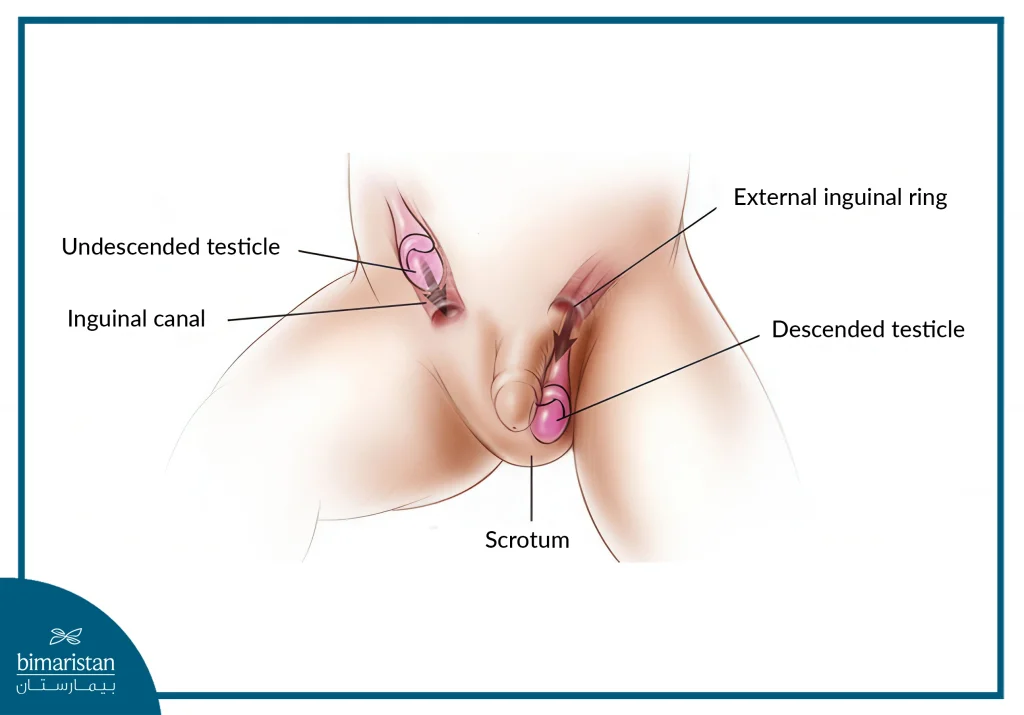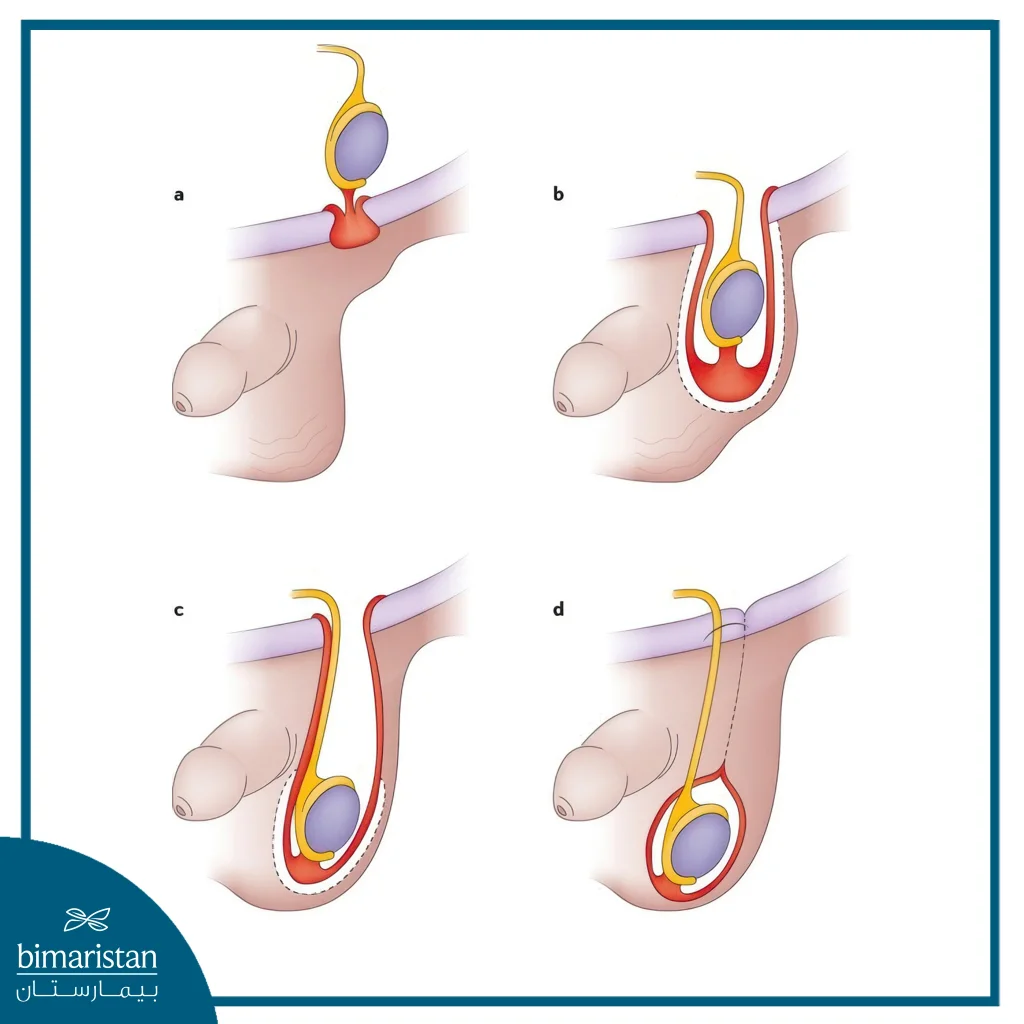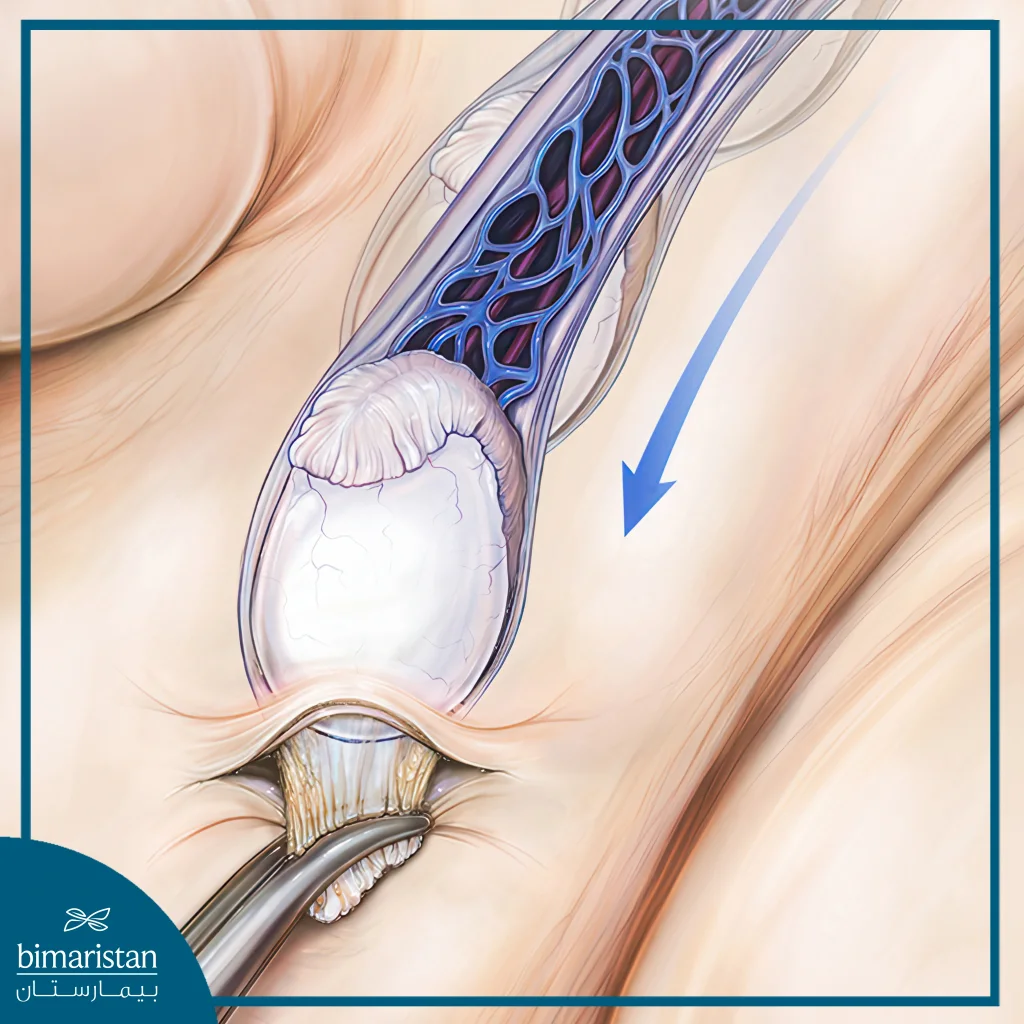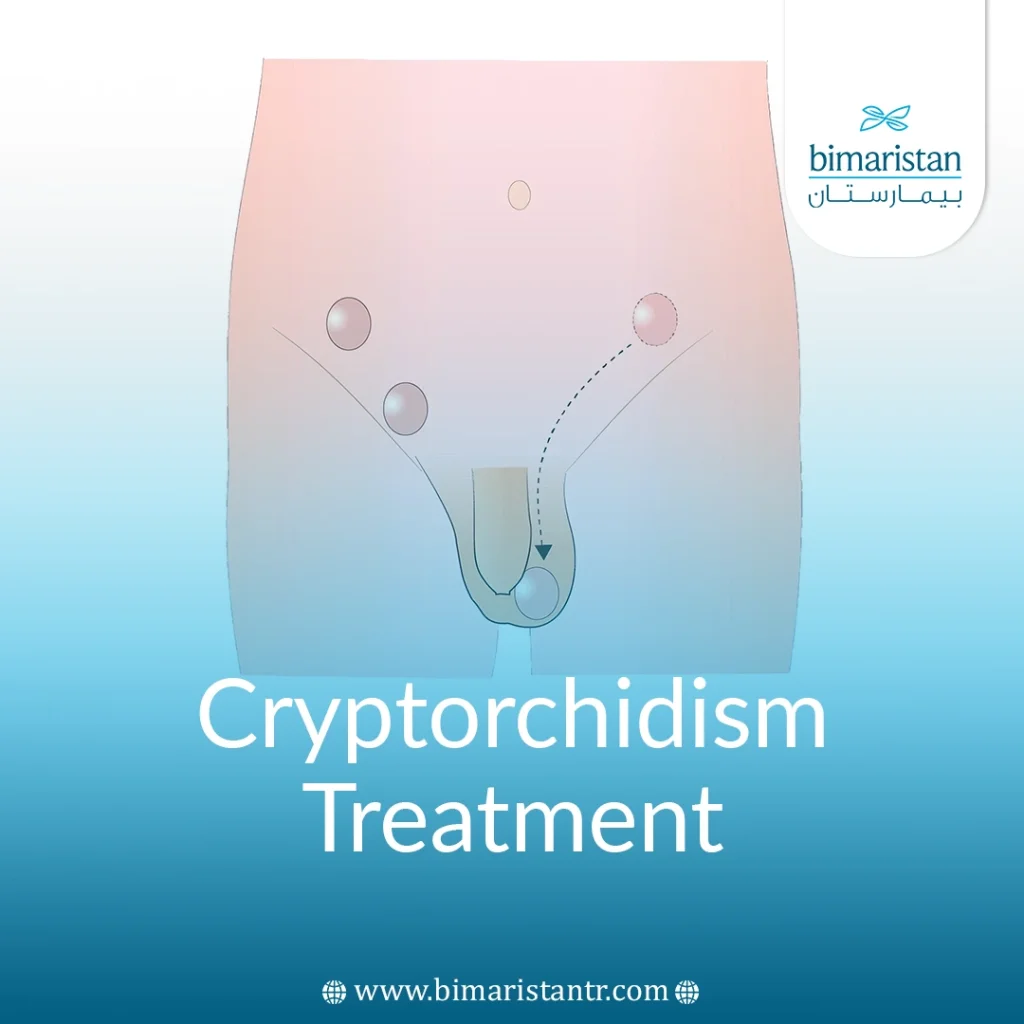Cryptorchidism treatment in Turkey includes undescended testicle surgery, a procedure to move a testicle into the scrotum if it remains in the abdomen after birth. This operation is performed after the child reaches 6 months of age.
An overview of undescended testicle
Cryptorchidism, also known as “undescended testicle,” is a testicle that has failed to descend into its normal position in the scrotum. Most cases of cryptorchidism involve one testicle, but it may occur in both testicles in 10% of cases.

Undescended testicle may be seen in premature babies born prematurely because the normal testicle does not descend from the abdomen to the scrotum until the seventh month of intrauterine life, and may be associated with growth deficiency, hormonal disorders, and cleft palate.
The American Urological Association reported in an article that 3-4% of children born after conception have an undescended testicle, while the percentage rises to 21% in children born before conception.
Sometimes, the testicle ascends into the inguinal canal and gets stuck there after descending into the scrotum due to the natural reflex that moves the testicle upward when cold and frightened (bouncy testicle).
Undescended testicles can occur in adults, although this is, of course, rare.
Undescended testicle in Turkey is easily diagnosed by palpating the scrotum to look for the testicle immediately after birth and noticing the disappearance of one or both testicles, when the testicle is not felt, sometimes an EKG of the scrotum and lower abdomen can be performed to find the location of the testicle.
Surgery remains the key to determining the location of the testicle and differentiating between an undescended testicle and a cryptorchidism if the doctor notes that the testicle is not in place at birth.
Cryptorchidism treatment in Turkey
Undescended testicle treatment in Turkey depends mainly on the severity of the condition, the age of the child, and his general condition. Studies have proven that undescended testicle surgery is the best treatment for the condition and is associated with a high success rate, but it is necessary to delay the procedure for more than six months.
Most of the time, the testicle descends spontaneously during the first six months of life towards the scrotum. Still, if it does not descend during this period, it is less likely to descend in the future without treatment and requires undescended testicle surgery.
If the testicle doesn’t descend and remains suspended in the abdomen or inguinal canal, long-term issues may result, such as:
- Infertility: Failure of the testicle to descend exposes it to high temperatures, leading to poor sperm morphology and low sperm count, and the likelihood of infertility increases when both testicles fail to descend.
- Testicular cancer: Patients who were born with an undescended testicle have an increased risk of testicular cancer when they reach the age of 30-40 years, especially if the testicle is in the abdomen, so they should have a regular testicular examination; however, reattaching the testicle through surgery at an early age will greatly reduce the incidence of testicular cancer.
- Inguinal hernia: A weak area in the lower abdominal wall or inguinal canal that herniates to allow the intestinal loops to pass through.
- Testicular volvulus: This results in the twisting of the cord that carries blood to the scrotum.
Undescended testicle surgery in Turkey
The ideal time for undescended testicle surgery in Turkey is between the ages of 6-18 months, as waiting any longer will put the child at risk of infertility or testicular cancer in the future.

The undescended testicle surgery, which takes about one hour, is performed by a pediatric surgeon in Turkey on an outpatient basis, which means the patient can go home the same day.
How undescended testicle surgery is performed
First, the child is placed under general anesthesia, and the doctor makes a surgical incision approximately one inch long in the lower abdomen or in the abdomen to locate the location of the undescended testicle.
For a testicle that has become lodged in the abdomen, a laparoscopic undescended testicle surgery is performed, where the doctor performs laparoscopy (a minimally invasive surgical technique that allows the testicle to be seen through a special scope).
An abdominal testicle may require a second surgery to return it to the scrotum.
The doctor then makes another small incision in the scrotum and gently pulls the testicle down through it and places it in a small pouch in the scrotum.
Finally, the testicle is held in place within the scrotum with sutures, and all incisions are closed.

After undescended testicle surgery
After undescended testicle surgery, the child is transferred from the operating room to a regular hospital room, where he or she stays for an hour and a half or two hours and then goes home.
The child’s nutrition after the operation should be limited to clear liquids. After two hours or more, soft foods such as bananas, rice, and soup should be introduced into the diet. The patient can return to eating all foods two days after the operation.
Your child should rest for a few weeks after undescended testicle surgery, so he should not do strenuous work or play games that require him to sit in the wound, such as riding a bicycle or a walker, to speed up the healing process.
The scrotum may be swollen for a few weeks after the procedure, but this is not dangerous, and the swelling will go away on its own.
Even after surgery to stabilize the testicle in place, testicular development should be monitored to make sure it is growing normally. The testicles are responsible for puberty and the development of male characteristics, so any issue with normal development may indicate a testicular abnormality.
Cryptorchidism treatment without surgery
Other ways to treat undescended testicles without surgery include:
- Hormone therapy: It is done by injecting HCG, which stimulates the body to release testosterone; this hormone may help the testicle to descend into the scrotum; this method is currently not used due to the superiority of surgery.
- Saline testicular prosthesis: Usually used in children who are missing one or two testicles, these replacements have no use other than to fill the testicular space and give the scrotum a normal appearance.
Sources:
